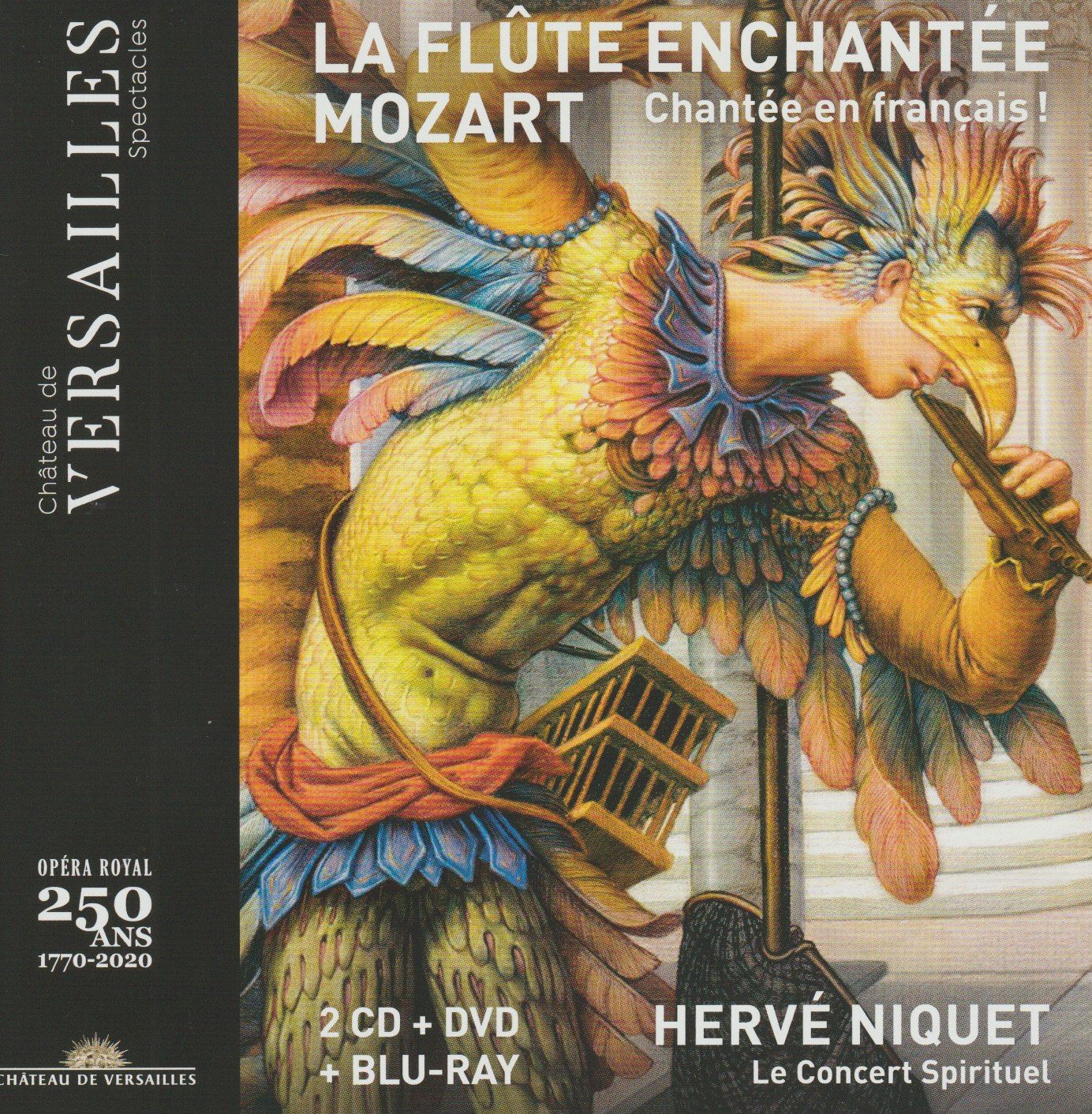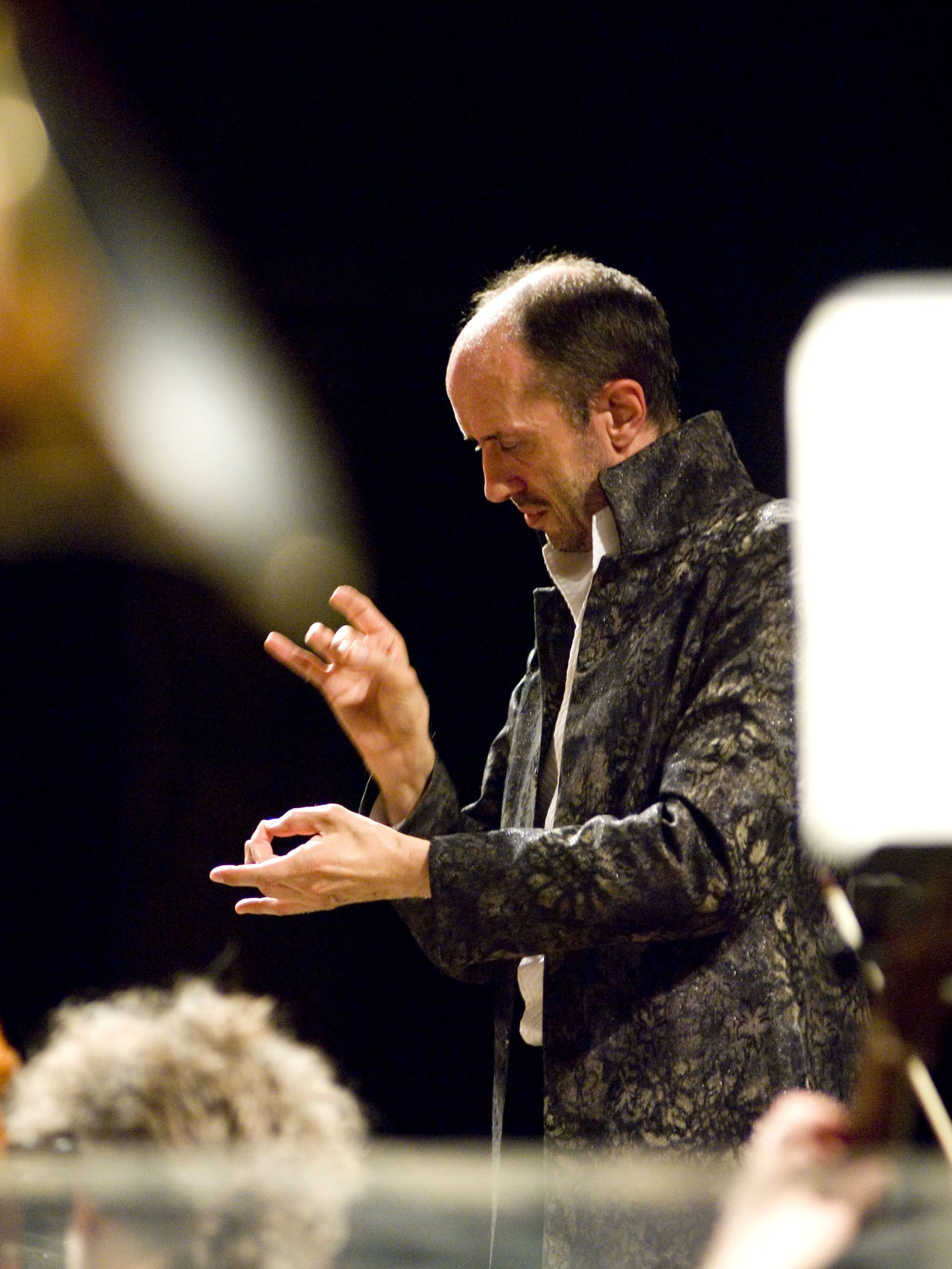Mozart's Flûte enchantée: Hervé Niquet and a French flute

Unless you count Hoffmeister’s Magic Flute (which one shouldn’t, obviously) this is Classical Explorer’s second post on Mozart's masterwork, his opera Die Zauberflöte: previously, we had a look at David McVicar’s production at Covent Garden. A recent performance of Zauberflöte under Christophe Rousset at the Gstaad Festival this year (with Sandrine Piau as Pamina and a Queen of the Night to die for) was massively impressive: no spoilers here, but my review of that will appear in the journal Opera Now.
Here at Versailles, we have Zauberflöte (old habits die hard - seriously, it's better to use the German for consistency) sung in French and presented as an extended dream sequence. Taken over from Liège, Cécile Roussat and Julien Lubeck's production looks like a fairy tale, almost but not quite for children. We are very much on the fairy tale end of the Zauberflöte spectrum here; Freemasonic elements, while imevitably still present in the trials, are somewhat dulled. As we hear Niquet's superbly detailed and lively Overture, Tamino prepares for bed. Toys become characters; a portrait becomes the Queen of the Night.
Here's the production in a YouTube video:
This is an 1897 translation of the text into French. The staging is fun - and one can enjoy it on either DVD or Bluray, both included in the box alongside audio-onlu compact discs. An old horn gramophone, set in motion by a domestic who seems to owe much to the commedia dell'arte, launches the Overture. There is a lot towatch while it plays out; essentially a mini-ballet. We are in Tamino’s bedroom - three acrobats prepare the bed for him who, once ensconsed, is presented with a book. Behind the bed, a "dream world" opens. Later, that gramophone horn becomes the “lock” that is used to silence Papageno.
A snake accosts Tamino in bed - "arrête" he sings, not "Zu hilfe". Even prepared, it might take you by surprise, but it only takes a moment or so to adjust. Mathias Vidal takes teh role. The three ladies are dressed as Egyptians, their lower halves implying carved stone columns. The Three Boys are sung by women (they had clearly been hiding in the bedroom cupboard). The opera eventually returns to the idea of the dream, with the Queen of the Night as Tamino's mother.
We met Florie Valiquette previously in her disc La Captive du Serail (also on Château de Versailles Spectacles). Her Pamina is distinctly doll-like in this production, which restricts her to the production's confines (as does the cage she initially finds herself in!). She has somewhat freer rein in the second act, and vocally again impresses, as does the Tamino of Mathias Vidal, whose “Dies Bildnis ist bezaubernd schön” (here, ”O douce et charmante inconnue”) is most beautiful. Marc Scoffoni camps it up nicely as Papageno, but he is a very strong singer indeed (one wonders if this sense of almost too much was deliberate).
The Queen of the Night is Lisa Mostin, who sings through a vagina shaped hole with a quarter-moon in her hair, as if a Harry Potter animated portrait. Niquet takes this very, very fast, and Mostin is a fine Queen, with a voice of substance (although Rocio Pérez wth Rousset in Gstaad was in another league entirely, a huge discovery - how lucky we are to be spoilt like this!). If Tomislav Lavoie's Sarastro lacks some heft (both in terms of stage gravitas and vocally), Olivier Trommenschlager is a fine Monostatos.

This is probably best presented as a “supplementary” Flute: in other words, a supplement to a more traditional, German Zauberflöte in your collection. But I enjoyed it thoroughly; at Versailles it must have fitted like a glove, with the intimate stage drawing the audience into the dreamworld.
